How Does Double Sponge Filter Work
Filters are not new to many fish keepers, generally speaking, filters are basically one of the basic configurations for fish keepers. Some people use double sponge filters to pursue a better filtration effect, so what is the difference between ordinary sponge filters and double sponge filters? What are the advantages of using a double-sponge filter? At the end of the article, we have prepared some tips about using the double sponge filter for aquarium hobbyists.
What is a sponge filter for an aquarium?
A sponge filter is one of the simplest and least expensive types of filter for an aquarium. The sponges absorb the excess debris and poop and leave the water clear. They are great for converting ammonia to clean water. Because they are cheap and easy to install, they are popular for a variety of fish species and tanks.
A sponge filter does not have any chemical filtration, but it does allow water to flow through it. You can attach the sponges to the tank’s life tube or attach them directly to the aquarium’s plastic housing. It is very convenient for new aquarists since there is no need for any frames to fit the sponge filter bags.
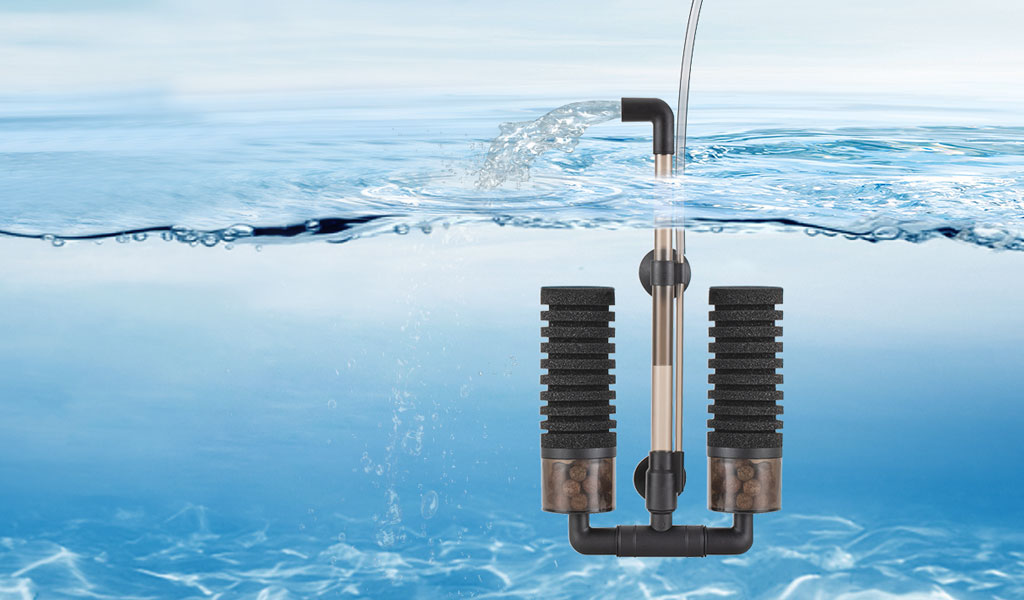
Sponge filters last for at least a year under normal conditions. If the pores of the sponge become clogged, the flow of water through the sponge will be decreased. Another way to clean the sponge is to rinse it under running water. Do not use tap water to clean it, as this contains bacteria. A sponge filter can easily get ruined.
A sponge filter works by collecting solid particles in water. Most sponge filters have a weighted base, but some models do not have a base and use suction cups. All sponge filters have an uplift tube and a hollow vertical pipe with perforations. The sponge is wrapped around a perforated section of the uplift tube. Air bubbles will mix with the water inside the uplift tube. The sponges help remove waste, bacteria, and other harmful particles from the aquarium.
Pros of double sponge filter
When it comes to the difference between a sponge filter and a double sponge filter, to be honest, it’s quite simple. A normal sponge filter is a single sponge, and a double sponge filter can clean the water of a fish tank more efficiently. Then maybe some people will keep asking about the advantages of using a double sponge filter.
The advantages of using a double-sponge filter are obvious. The sponges in a double filter also have high numbers of beneficial bacteria, so they are a great choice for breeding new fish. And since they are easily portable, they do not have to be kept in a static position.
A sponge filter has a weighted base and suction cups. You can attach a pump to this filter to remove any waste. This airlift tube allows the air to push into the sponge filter, mixing with the water and creating a suction near the base. The sponges in this type of filter do not absorb chemicals, but are ideal for removing solid waste. But you may also need to use a chemical filtration system if you plan to keep chemicals in your aquarium.
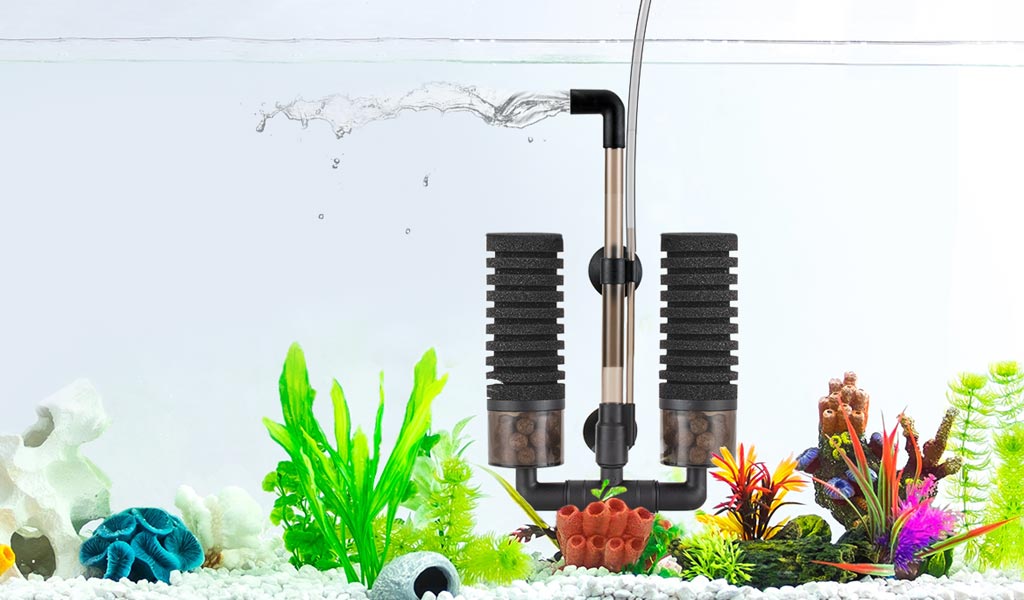
A double sponge filter is the best option for an aquarium. This filter can remove particles and reduce noise. In addition, the dual sponges will prevent algae from growing. Another major advantage is that it’s affordable. You’ll be able to use it with ease. And you’ll be able to control the flow of air with a valve. You can even purchase air pumps with valves. They are relatively inexpensive and easy to install.
Do double sponge filters to clean aquarium water
Do double sponge filters clean aquarium water? The answer depends on what type of filter you use. Some filters are made of sponge materials, while others are made of carbon. Carbon has been burned at a higher temperature to make it more absorptive and better at clearing water. They are popular for cleaning yellow discoloration caused by aquatic wood.
The frequency of cleaning a sponge filter depends on the size and use of your aquarium. A small aquarium with only a few fish may require more frequent cleaning than a large one with many messy fish. While this type of filter does not require changing the water very often, it is important to change the sponge as needed, to prevent disintegration. In addition to changing the sponge, you should also maintain the biological filtration of the tank.
A double sponge filter is particularly effective in biological filtration. The bacteria in the sponge filter process ammonia and nitrites into nitrogen and nitrates. A few species of bacteria convert nitrates to nitrogen, thus restarting the nitrogen cycle. Most aquarium ammonia comes from fish waste and undigested food.
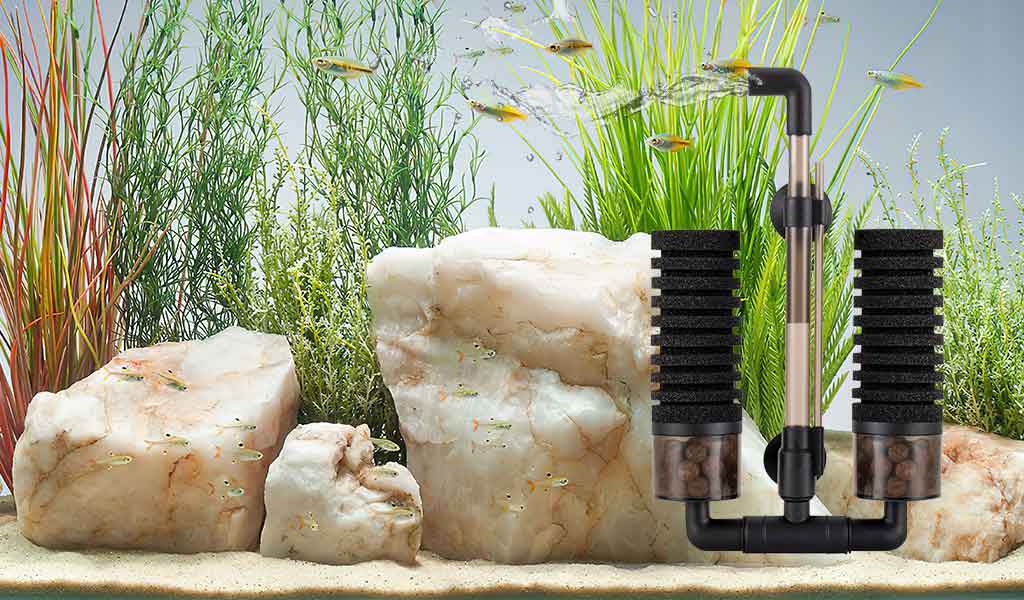
How does a double sponge filter work in an aquarium
If you’ve ever wondered how the double sponge filter works in an aquarium, this part will give you a brief explanation. The double sponge filter works in conjunction with an air pump to remove waste from the water and provide a high-quality filtration system. Then, install the sponge filter in your aquarium and make sure the air pump is working.
When you’re ready to use your new filter, first remove the plastic center from the tank and remove the air tube from the bottom. Next, pull the sponges out of the filter and place them in a bucket. Make sure not to disturb the sponge dirt, as this can cause it to clog. You can then squeeze the sponges to catch fish waste. Make sure not to disturb the plastic center, as you’ll need to clean it, too.
After the second sponge has matured, you can replace it. Be sure to run the new sponge for several weeks to get the proper amount of bacteria and growth. If you’re replacing your double sponge filter with a new one, you can replace both sponges at once. Just remember that the new sponge will bob around until it is fully saturated. It is also important to remember that some fish breeds produce more waste than others, so it’s wise to replace the sponge every six months or so.
Another advantage of using a sponge filter is that it is compatible with any aquarium setup. The sponges are very adaptable to filtration systems and are a great choice for beginners. When you’re buying a sponge filter, keep in mind that you don’t want it to be too powerful, as this can be harmful to your fish. A small beginners’ aquarium with a double sponge filter is a great place to start.
A double sponge filter is especially useful for hospital tanks, as the bubbles produced by a standard filter may suck up small fish. In addition, the slow filtration speed of a sponge filter can help young or weakfish grow and thrive. Because it isn’t powerful enough to suck up invertebrates, it is a great option for a hospital tank. In addition, it’s very easy to clean – simply remove the sponge and clean the tank. It won’t remove beneficial bacteria, but it will filter out larger debris that might otherwise cause damage to your fish.
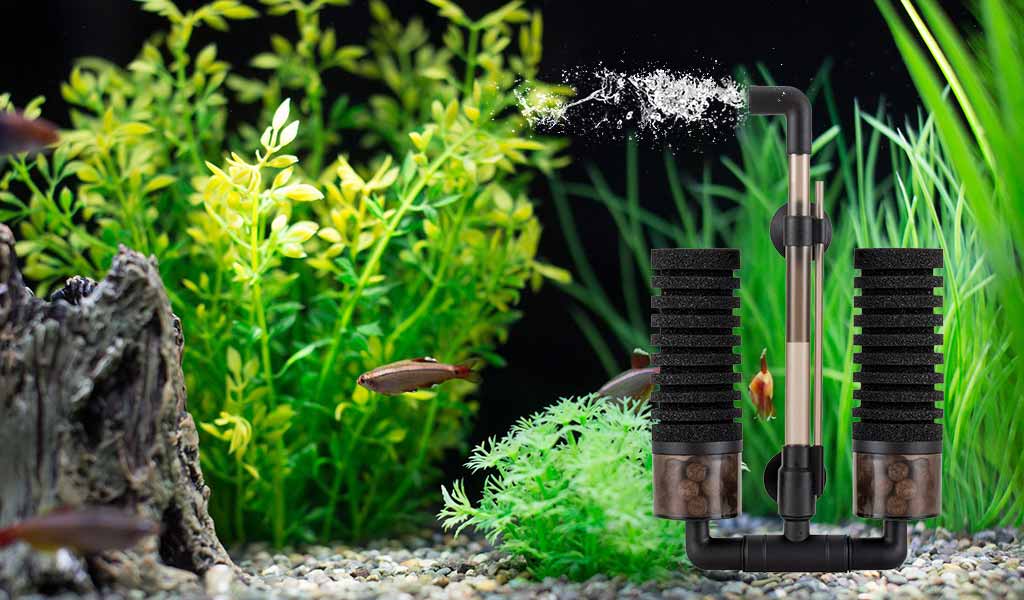
As with any filter, you must be sure to choose the right size for your aquarium. Unlike sponges used for cleaning kitchens, aquarium sponge filters are made from synthetic materials and are designed to process water quickly and effectively. Their unique shape and size will enable them to effectively filter the water, providing optimal space for beneficial bacteria to grow. You can also use your old bath towel or carpet/laminate flooring underlay as a filter. If you don’t have a spare air pump, you can soak a sponge in water and fish poop, as these are both good sources of beneficial bacteria.
Some tips about using the double sponge filter
Before you start cleaning your aquarium, you should know a few tips about using the double sponge filter. You can make the cleaning process easier by using some tips. One of these tips is to use a place mat to hold the filter. Also, be sure to check the size of the sponge before cleaning. If you have trouble using the double sponge filter, check for cracks.
To keep your tank clean and maintain the beneficial bacteria, you can alternate between sponge filters. Make sure to clean them with clean water before you replace them. You should clean sponge filters once or twice a week, depending on the load of your tank. Always remember to rinse them in fresh water after cleaning them.
You should know that the size of the sponge filter is not limited to 10 gallons. It can also be used in smaller tanks, such as 2.5-gallon aquariums. The tip size has no impact on the flow rates. The power source determines the flow rates. Hence, you can mix and match the sponge sizes to get the desired effect.
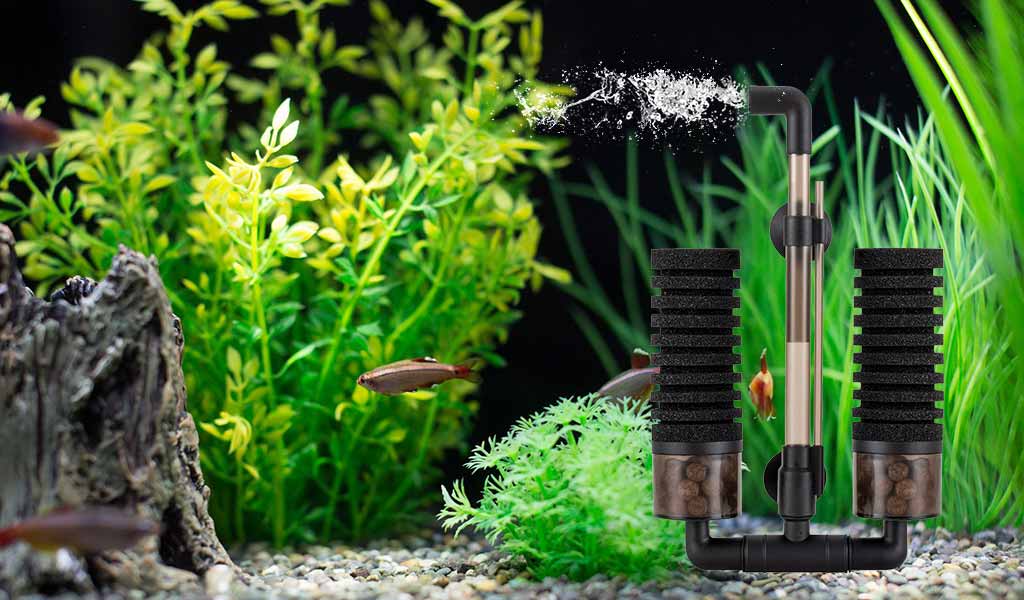
Besides the size, filtration stages are important for your fish tank. It is recommended to choose a sponge filter that has multiple filtration stages. Some sponge filters offer biological filtration to kill bacteria and impurities, while others use chemical filtration to remove odors and impurities. Some sponge filters also feature extra media, like ceramic biofilter balls. However, a sponge filter that has more filtration stages will result in more efficient water filtration.
The first thing that you need to do is install the air stone. You can connect the air stone to the air pump by using airline tubing or directly. After that, snap the bullseye onto the top of the sponge filter. When you are done, place the bullseye into the foam. Then, connect the lift tube to the nipple of the sponge filter. When you’re done, you can attach the bullseye to the weighted base of the sponge filter.
The second thing you need to remember when using a sponge filter is the frequency of cleaning. If you do not clean it frequently, the bacteria will crash and destroy your aquarium. Cleaning the double sponge filter is a good habit, and will keep your aquarium healthy. You should clean it every week or so to avoid this problem. You can also clean the sponge filters by rubbing them with a soft brush or a cloth.

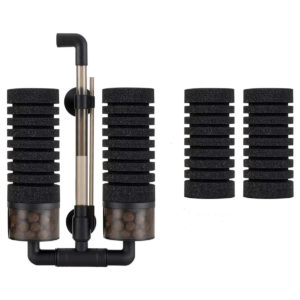
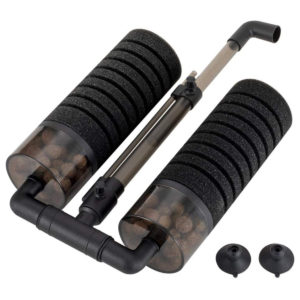
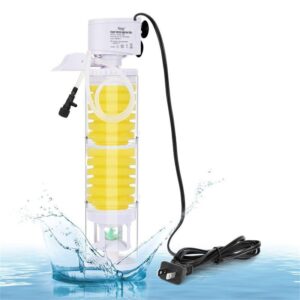
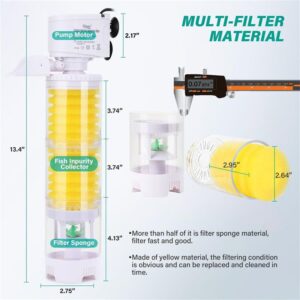
Hi there I’d like to enquire about wholesale pricing for your large double sponge filters for aquariums.
How much each.. how much for shipping.
Etc.
Hi Laszlo Tresanszki,
hygger customer service will reach you out to solve the issue.
Please check the mailbox lately.
Thanks